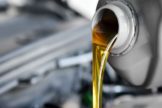
Global Automotive Lubricants Market 2019 Size, Global Trends, Comprehensive Research Study, Development Status, Opportunities, Future Plans, Competitive Landscape and Growth by Forecast 2028
-
14324
-
May 2023
-
185
-
-
This report was compiled by Kalyani Khudsange Kalyani Khudsange is a Research Analyst at Prudour Pvt. Ltd. with 2.5 years of experience in market research and a strong technical background in Chemical Engineering and manufacturing. Correspondence Sr. Research Analyst Linkedin | Detailed Market research Methodology Our methodology involves a mix of primary research, including interviews with leading mental health experts, and secondary research from reputable medical journals and databases. View Detailed Methodology Page
-
Quick Navigation
Automotive Lubricants Market Overview
“The global Automotive Lubricants market size is expected to be worth around US$ xx Billion by 2021 from US$ X.xx million in 2031, growing at a CAGR of X.x% during the forecast period 2021 to 2031.”
Automotive Lubricant is a thick sticky liquid, which is used to provide ease of movement to the various parts of the automotive such as gear, engine, brakes, suspension, etc.
Automotive lubricant is a substance used to decrease friction between connected surfaces, which eventually reduces heat generated from the movement of surfaces.
It is necessary to use lubricants for the vehicle to perform smoothly and also to provide protection to automobile body parts. Automotive lubricants are available in various types of viscosity and are different for every part of the automotive.
For instance, gear oils deal with the sliding action of gears and provide great resistance to shear breakdown, which will reduce energy consumption owing to its low friction coefficient.

Similarly, engine oils are necessary to protect viscosity loss, which provides sustainability for lubricating between engine parts in the long run. The higher the viscosity level of the lubricants, the higher will be the ease of motion and the lower will be the possibility of wear and tear.
Major Positive and Negative Impacting Factors
Rising production and demand for automobiles due to increasing disposable income among individuals and an increasing number of discounts and EMI options for purchasing automobiles are among the key factors propelling the growth of the global automotive lubricants market.
Additionally, the enormous popularity of sports vehicles, especially for automobile racing, coupled with increasing demand for passenger cars and commercial vehicles from the transportation sector and other commercial sectors, are factors that are anticipated to fuel global market growth.
Furthermore, shifting consumer preference towards organic and highly sustainable lubricants is estimated to fuel global market growth over the next few years.
However, rapidly inclining demand for battery-powered electric vehicles and hybrid vehicles is a factor that could result in low adoption of automotive lubricants and restrain the market growth to some extent.
Automotive Lubricants Market: Segment Analysis
By Product Type:
Amid the segments based on types of products, the engine oil segment is anticipated to record the highest share in terms of value in the target market.
The gear oil segment is projected to grow at a comparatively higher growth rate in the target market.
By Distribution Channel:
Amid the two distribution channels, the OEM segment is anticipated to record a higher value share as compared to another distribution channel segment in the global market, owing to the high adoption of automotive lubricants by manufacturers while production of automobiles.
Analysis by Region: Automotive Lubricants Market
Currently, North America Market accounts for the largest market share in the global automotive lubricants industry, majorly due to the large volume production of automobiles by various major manufacturers in the region.
The market in the Asia Pacific is anticipated to witness a significant rate of growth over the 10-year forecast period, followed by the Europe market.
This is due to the ever-growing automobile industry in the economies of the region such as China, Japan, and India, among others, wherein the markets in Malaysia, Thailand, Philippines are estimated to grow at a moderate rate due to the focus of major manufacturers to set up manufacturing plants in countries in APAC and high demand for hatchback and SUV vehicles.
In January 2018 for instance, Hyundai Motor Company announced plans to set up a car manufacturing plant in Southeast Asia, with Indonesia and Vietnam being possible locations. This is in order for the company to enhance its presence across the Asia Pacific region.
Global Automotive Lubricants Market Segmentation:
-
Segmentation by Base Oil:
-
- Mineral Oil Lubricants
- Synthetic Lubricants
- Semisynthetic Lubricants
- Bio-Based Lubricants
-
Segmentation by Product Type:
-
- Engine Oils
- Gear Oils
- Transmission Oils
- Others (coolants, Brake oils, etc.)
-
Segmentation by Vehicle Type:
-
- Passenger Cars
- Light Commercial Vehicles
- Heavy Commercial Vehicles
- Others (Two-wheelers, and Three-wheelers)
-
Segmentation by Distribution Channel:
-
- OEM
- Aftermarket
-
Segmentation by Region:
-
- North America
- Europe
- Asia Pacific
- Latin America
- Middle East & Africa
Attribute Report Details Market Size Ask For Market Size Growth Rate Ask For Growth Rate Key Companies Ask For Companies Report Coverage Revenue analysis, Competitive landscape, Key company analysis, Market Trends, Key segments, Distribution Channel, Market Dynamics, COVID-19 Impact Analysis and more… Historical Data Period 2015-2020 Base Year 2022 Forecast Period 2022-2031 Region Scope North America, Europe, Asia-Pacific, South America, Middle East & Africa Country Scope United States, Canada and Mexico, Germany, France, UK, Russia and Italy, China, Japan, Korea, India and Southeast Asia, Brazil, Argentina, Colombia etc.Saudi Arabia, UAE, Egypt, Nigeria and South Africa Revenue in US$ Mn -
-
-
- Royal Dutch Shell plc
- Sinopec Corporation
- ExxonMobil Corporation
- BP p. l. c.
- Total S.A.
- Lubriplate Lubricants Co.
- Chevron Corporation
- Fuchs Lubricants
- LUKOIL Oil Company
- Sasol Limited




